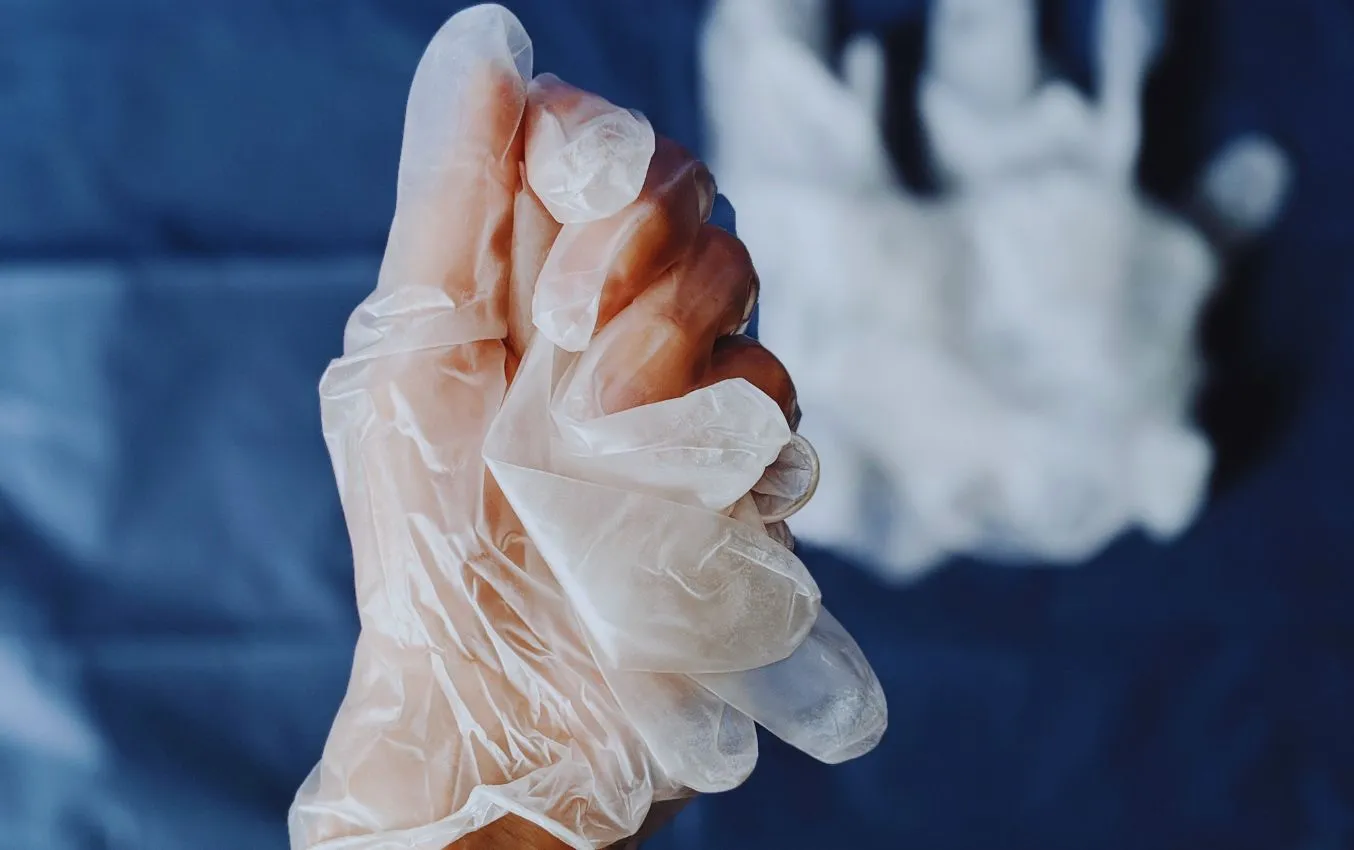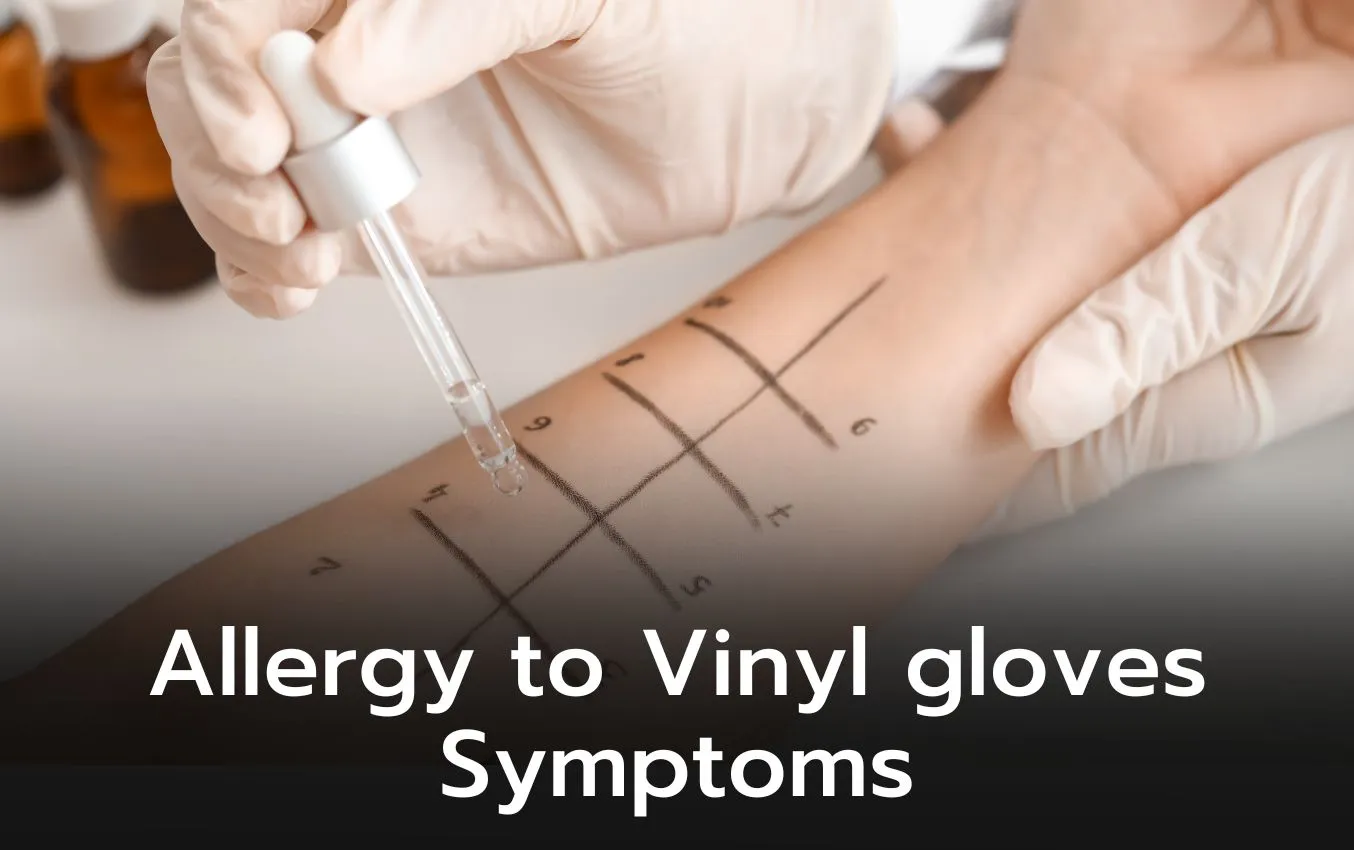You might not think twice about slipping on a pair of vinyl gloves, but for some people, these seemingly harmless gloves can trigger a range of uncomfortable and even dangerous allergic reactions. From redness and swelling to itching and hives, signs of allergy to vinyl gloves symptoms, it’s essential to recognize the signs of an allergy to vinyl gloves and take action.

The Rise of Vinyl Gloves: Convenience vs. Risk
Vinyl gloves have become a staple in the healthcare and food industries due to their affordability and practicality. However, this convenience comes at a cost. Vinyl gloves contain chemicals like phthalates, accelerators, and residual monomers that can cause allergic reactions in some individuals.
What’s in Vinyl Gloves?
So, what makes vinyl gloves so problematic? It all comes down to their composition. Vinyl gloves are primarily made of polyvinyl chloride (PVC) combined with plasticizers for flexibility. While they don’t contain latex proteins, the chemicals used in their production can still trigger allergic responses.
allergy to vinyl gloves symptoms
So, how do you know if you’re allergic to vinyl gloves? Look out for common symptoms like redness, swelling, burning sensations, blisters, and cracks on the skin immediately after exposure. These reactions can be caused by allergens present in the gloves or irritants leaking through worn-out gloves.
Irritation vs. True Allergy: What’s the Difference?
Not every skin reaction to vinyl gloves means you’re allergic. Irritation caused by contact with chemicals or irritants due to glove leakage can mimic allergic symptoms. The key difference is that allergic reactions involve the immune system’s response to specific allergens, while irritation is a non-immune response to irritants.
The Culprits Behind Vinyl Glove Allergies
So, what’s behind these allergic reactions? Chemical accelerators used in the manufacturing process, like phthalates, can trigger allergic contact dermatitis in sensitive individuals. Powder contamination in non-powder-free gloves can also lead to skin reactions and dermatitis.
Powder-Free Gloves: A Safer Option
To reduce the risk of allergic reactions, opt for powder-free vinyl gloves. These gloves minimize the likelihood of exposure to potential allergens and irritants, promoting skin health and comfort during glove use.
Vinyl Gloves vs. Other Types: What’s the Best Choice?
While vinyl gloves have their advantages, there are other types of gloves that may offer different benefits. Latex gloves, for instance, contain latex proteins and may offer better dexterity and tactile sensitivity, but they’re more likely to trigger latex allergies.
Nitrile gloves are particularly effective at preventing the spread of germs because they’re made from a synthetic rubber called nitrile-butadiene rubber. This material is incredibly resistant to punctures and tears, which means that even if you accidentally prick or scrape your glove, the germs won’t be able to seep through. Plus, nitrile is impermeable to oils and fats, which makes it perfect for handling chemicals or working with greasy machinery.
But what really sets nitrile gloves apart is their ability to prevent cross-contamination. Because they’re so resistant to chemicals and germs, they create a barrier between your skin and the outside world. This means that even if you touch something contaminated, the germs won’t be able to penetrate the glove and infect you.
Vinyl Gloves: A Safer Option for Latex Allergies
If you’re allergic to latex, vinyl gloves may be a safer option. Composed of PVC and plasticizers, they have a lower allergenic potential compared to latex gloves.
Vinyl vs Nitrile Gloves: Comfort and Protection
For individuals seeking comfort and protection, nitrile gloves may offer a better alternative to vinyl gloves. They provide enhanced durability and resistance to punctures and chemicals, making them suitable for a wide range of tasks.
By understanding the symptoms of an allergy to vinyl gloves and exploring the causes behind these reactions, you can take steps to protect yourself and make informed choices about the gloves you wear.
